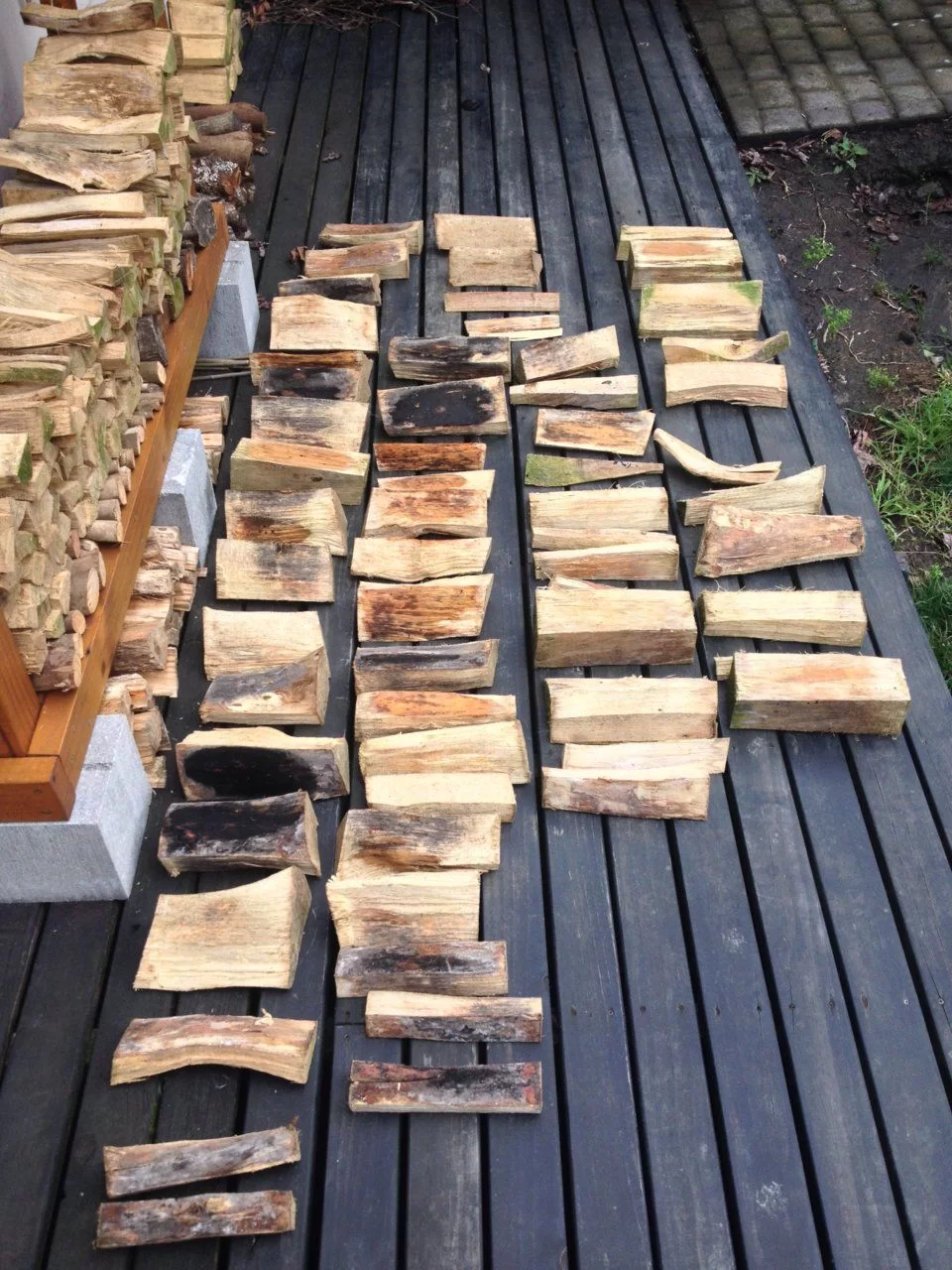A couple of weeks ago I split and debarked a small amount of recently felled wood before stacking it thinking that it may help speed up the seasoning process. The bark was very thick (1-2 cm) and spongy. Unfortunately the surfaces that previously had bark have rapidly started developing fungi in the stack. Similar to a peeled apple left sitting around for a while, the debarked surfaces started to brown off but also became rather viscous. The stack is only one log deep, elevated from the ground, covered from rain and gets plenty of sun & air so the drying conditions shouldn't be a problem. The ends of the logs are drying out well already. The wood is '(broken link removed to http://www.weedbusters.org.nz/weed-information/erythrina-x-sykesii/59/)' or 'Flame Tree' as we call it down under. I don't imagine it is the best for burning as it is very fibrous and light but I've got a whole lot of it to get rid of so might as well use it for the early burn! I've come to the conclusion that I'd be best to leave the bark on in the future as the extra effort involved has turned out to be counterproductive. Has anyone else here experienced this phenomenon or is anyone able to explain what might be going on? Perhaps exposing the sapwood has prematurely released moisture that has become trapped in the stack?
-
Active since 1995, Hearth.com is THE place on the internet for free information and advice about wood stoves, pellet stoves and other energy saving equipment.
We strive to provide opinions, articles, discussions and history related to Hearth Products and in a more general sense, energy issues.
We promote the EFFICIENT, RESPONSIBLE, CLEAN and SAFE use of all fuels, whether renewable or fossil.


